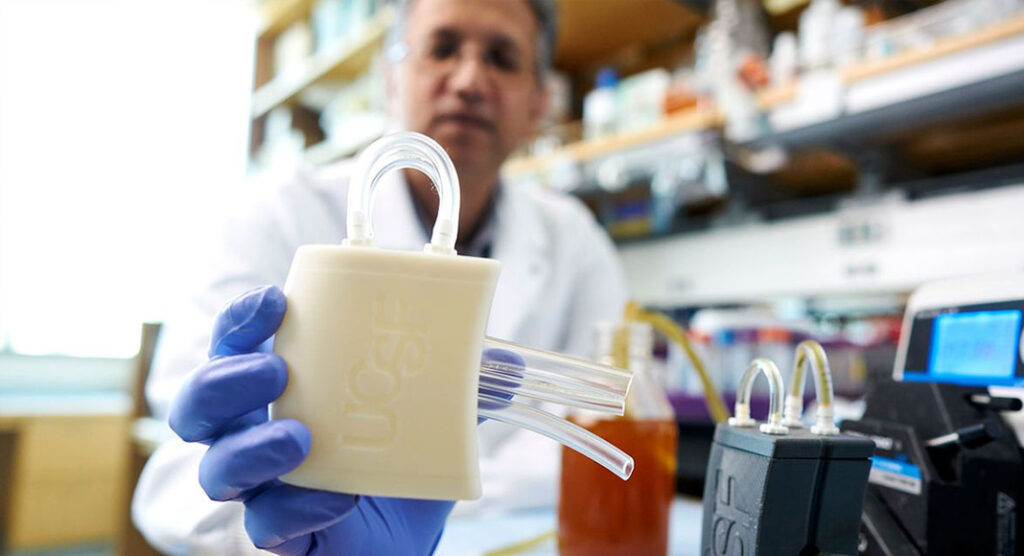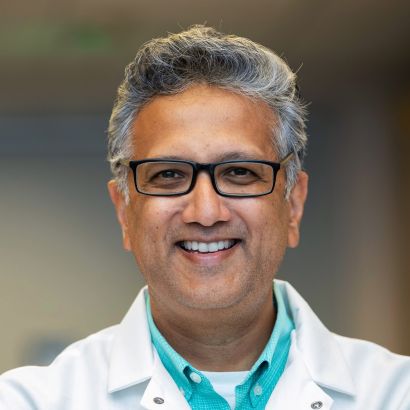
Mega Doctor News
University of California San Francisco

The Kidney Project national research team is being led by Shuvo Roy, PhD, a bioengineer and faculty member in the Department of Bioengineering and Therapeutic Sciences, Schools of Pharmacy and Medicine, University of California, San Francisco (UCSF). The project is co-directed by William Fissell, MD, at Vanderbilt University Medical Center.
The team is developing a surgically implanted, free-standing bioartificial kidney to perform the vast majority of the filtration, balancing, and other biological functions of the natural kidney. The two-part device leverages recent developments in silicon nanotechnology, membrane filtration, and cell science. It is powered by the body’s own blood pressure without the need for external tubes and tethers or immunosuppressant drugs.
UCSF is the appropriate home base for the project. It’s known worldwide as an institution that attacks biomedical problems with the kind of interdisciplinary zeal required to carry forward an effort this bold. And UCSF has made The Kidney Project a campus research priority.
The need for a new kidney failure treatment option is great and growing, and the timeline therefore is ambitious. The Kidney Project team anticipates first-in-human clinical trials in a couple of years.
Miniaturizing the extracorporeal Renal Assist Device
The implantable bioartificial kidney builds upon the existing extracorporeal Renal Assist Device (RAD), which is a bioartificial kidney that combines a membrane hemofilter and a bioreactor of human renal tubule cells to mimic many of the metabolic, endocrine, and immunological functions of a healthy kidney.
While clinical trials confirmed that the RAD can safely treat acute renal failure in a critical care setting, adoption of the RAD for routine treatment of kidney failure patients is hampered by its labor-intensive and complex operation, large size, and high marginal cost.
The ultimate goal of The Kidney Project is to apply microelectromechanical systems (MEMS) and nanotechnology to miniaturize the extracorporeal RAD into a surgically implantable, self-monitoring, and self-regulating bioartificial kidney.
After a single surgery to establish a permanent blood connection, the bioartificial kidney processes blood continuously for 24 hours per day, which mitigates the inconveniences and morbidities associated with intermittent hemodialysis.
There are several benefits to the implantable bioartificial kidney including the alleviation of the necessity of constant physician oversight and a heavy regimen of immunosuppressant drugs and medication.
Leveraging recent advances in science
To mimic the work of a natural kidney, the bioartificial kidney has to contain high efficiency ultrafiltration membranes, be able to regulate blood flow, and stabilize necessary cells within an engineered environment.
Three key technology developments were needed to implement these functions:
high-efficiency ultrafiltration membranes,
control of blood-materials interactions such as thrombosis and fouling, and
stable differentiated function of renal cells in an engineered construct.
Advances in silicon nanotechnology were required to make it possible to mass-produce reliable, high-porosity, robust, and compact membranes. Improvements in molecular coatings that impart blood compatibility and techniques to coat silicon membranes without blocking pores were needed. And cell sourcing and storage issues had to be resolved. All of these technologies are now in place.
Two components: hemofilter and cell bioreactor
Our hemofilter uses silicon nanotechnology to produce a highly efficient and compact membrane, which relies on the body’s blood pressure to perform filtration without needing pumps or a power supply. The hemofilter must be capable of generating meaningful ultrafiltration volumes at driving pressures similar to capillary perfusion pressure, while remaining free of fouling for months. Furthermore, if this technology is to be generalized to implantable continuous therapies, protein losses must be minimal.
For the cell bioreactor, we are applying recent advances in the field of tissue engineering to grow and maintain renal tubule cells. The bioreactor must be capable of high-volume salt and water reabsorption from the ultrafiltrate while maintaining a barrier to reabsorption of toxins. In addition, it should impart biological activity such as autoregulation of blood pressure and production of vitamin D.
Miniaturization challenges
Early in our design process we identified two major obstacles to miniaturizing the RAD: size and pump requirements of modern dialysis units, and water volume needed for dialysis.
At the same time, we were inspired by the success of hollow fiber polymer membranes used in treating renal failure extracorporeally. However, we noticed that the kidney’s natural fibers were uniform, elongated, slit-shaped structures, rather than the irregular and more cylindrically shaped pores of polymer membranes. Our team has applied MEMS technology for the production of silicon nanopore membranes with slit-shaped pores that are tailored for implementation in a bioartificial kidney.
WATCH:












